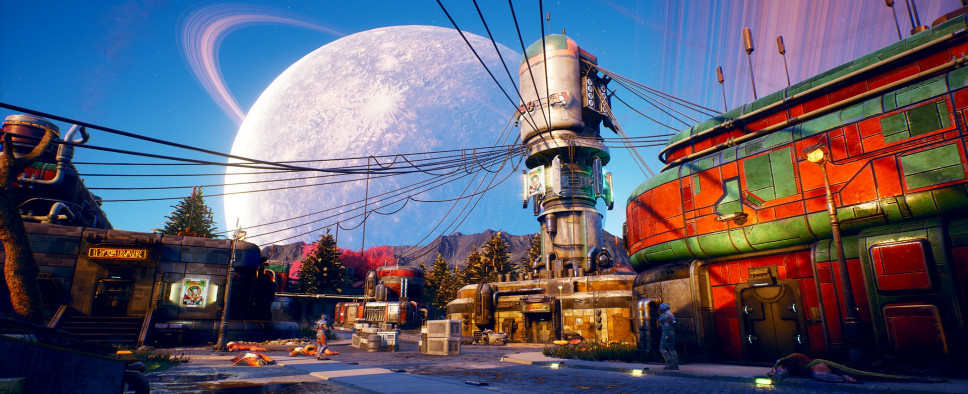The Outer Worlds Interview on NPC Design
-
Category: News ArchiveHits: 1369

Memorable NPCs are considered by many to be a staple of role-playing games. And if you'd like to know how the developers over at Obsidian Entertainment go about creating their AI-driven cast members, you should check out this recent GameSpot interview with The Outer Worlds' co-director Leonard Boyarsky and narrative designer Nitai Poddar. An excerpt:
Where does the character creation process begin, and does Obsidian, as a whole, have a process for developing characters?
Boyarsky: I think it's different for every project as well as different parts of the same project. In general we come up with an outline of what we want to do in general for the entire game. And then, you know, the setting generates some characters, the story you want to tell generates some character ideas. It all has to do with the confluence of events that lead you to that character. Characters should feel like they existed before then, so you have to place them in the world. It's just kind of… we could start from any number of places for the actual character. You could start with a character you like from other media like a book or a movie, just a very basic idea. You know this is this character's reason for existence, and just go from there.
Poddar: I think there are a couple things that Obsidian tries to do, studio-wise, as it relates to designing characters. I don't know if other studios do this, but traditionally at Obsidian, not just for The Outer Worlds, but for previous games, a narrative designer usually has control of a companion. As the companions get written they are divvied among the narrative designers and we tend to pick one and take them in whatever direction we want. We also like to explore particular ideas in an area. If an area in The Outer Worlds, like the Groundbreaker, has a particular conflict, or Edgewater has a particular conflict, in order to explore that conflict we will craft a character who is deeply invested in that problem somehow. So there isn't really a separation between character and area or character and story. They go hand in hand.
Are there any traits or tropes that are off-limits?
Boyarsky: Stuff that feels overdone, but sometimes taking something that's overdone and doing it in a new way can be more interesting. You know, subverting player expectations. We always like to do things that feel a little different, that feel off-center, that you're not going to see anywhere else. I would think anyone trying to tell good stories or create good characters would avoid flat characters--characters that just exist to get you to the next plot point.
Poddar: Yah if there is, I haven't found it yet. The sign of a successful character is that people tend to like it or see the value in that character. Like you said, the characters we try to avoid are just RPG characters that have nothing to say and no real investment outside of their quest. I don't really think we tend to think of our characters as tropes. We are more interested in motivation and what they have to say, their dialogue, and their personality.

